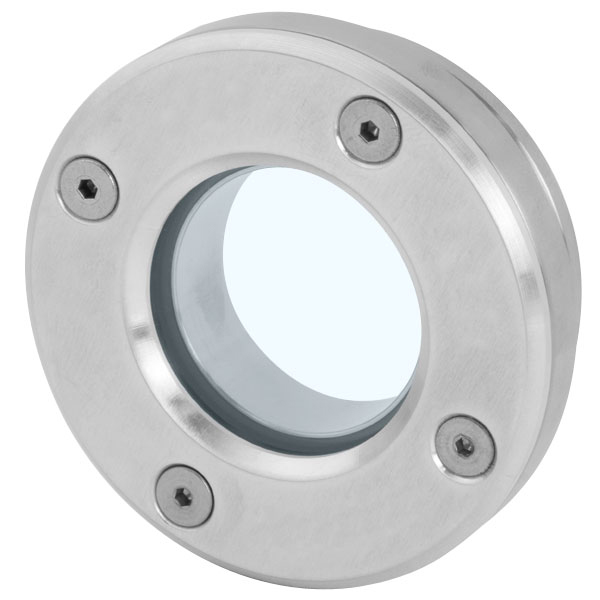In the realm of contemporary science and technology, vacuum portals have emerged as indispensable tools that connect the gap between observation and research. These specialized windows allow researchers to study phenomena occurring within a sealed environment, offering valuable insights in multiple scientific fields. Whether it’s in particle physics, materials science, or space exploration, vacuum viewports enable scientists to conduct experiments and obtain data in regulated settings, unaffected by the influence of atmospheric conditions.
The significance of vacuum viewports extends beyond mere observation. They play a vital role in enhancing the precision and dependability of test outcomes, allowing for a deeper understanding of intricate processes at a nano level. By enabling the study of materials under intense conditions, such as high temperatures or low pressures, these cutting-edge devices are essential for progress in innovation and our understanding of the world. As we delve deeper into the applications and benefits of vacuum viewports, it becomes clear that they are effective instruments that contribute significantly to scientific advancement.
Overview to Vacuum Windows
Vacuum windows are vital components in various scientific and industrial applications. These specific panels are designed to maintain a vacuum environment while allowing viewing and access to processes occurring inside vacuum chambers. They play a key role in fields such as material science, aerospace engineering, and optics, where a controlled environment is necessary to achieve specific results.
The construction of vacuum viewports typically includes the use of materials such as glass, quartz, or ceramics that can tolerate significant pressure differences. These materials must be carefully selected to ensure high optical clarity while maintaining structural integrity in a vacuum. The design of the viewport must also accommodate thermal expansion and contraction, making it a advanced element in vacuum systems.
In modern scientific research, the importance of vacuum viewports cannot be ignored. They enable researchers to conduct experiments under vacuum conditions, allowing the study of materials and processes that would be modified or destroyed in the presence of air. This ability has opened up new opportunities in the exploration of fundamental scientific principles and practical applications, driving progress in technology and materials development.

Applications in Scientific Research
Vacuum portals play a critical role in various fields of scholarly research, enabling observation and exploration under regulated environments. These viewports allow investigators to study materials and phenomena in a devoid of air, which is essential for experiments that require the exclusion of air and other gases. By providing a direct line of sight into vacuum chambers, these components allow detailed imaging, spectrum analysis, and various analytical procedures that are essential for advancing knowledge in materials science, chemistry, and physical sciences.
In astronomy and space research, vacuum viewports are essential to the performance of telescopes and various devices designed to monitor celestial bodies. By reducing atmospheric interference, these viewports allow researchers to collect accurate data from remote stars and galaxies. This clarity is crucial for analyzing the makeup, behavior, and life cycles of astronomical phenomena, thereby enhancing our understanding of the universe and the fundamental laws of physics.
Additionally, vacuum viewports are used in the advancement and testing of semiconductors and nanomaterials. As these materials often exhibit properties that are reactive to their environment, preserving a vacuum is vital for accurate measurement and analysis. The viewports provide necessary access for monitoring devices and allow researchers to conduct experiments that demand precise temperature, pressure, and contamination control. This ensures that cutting-edge advancements in technology can be achieved, particularly in fields such as electronics and renewable energy technologies.
Improvements and Upcoming Prospects
Current advancements in vacuum viewport technology have greatly improved the effectiveness and versatility of scientific instruments. Innovations in materials, such as the advancement of more robust and more transparent composites, have helped to create viewports that maintain clearness and durability under harsh conditions. These upgrades allow researchers to perform experiments with a increased degree of precision and reliability, particularly in fields such as materials science and high-energy physics where the integrity of vacuum environments is vital.
Looking ahead, the integration of advanced technology into vacuum viewports presents stimulating prospects. The incorporation of sensors and monitoring systems could enable real-time data collection and analysis, providing scientists with immediate feedback on experimental conditions. This could not only simplify research processes but also forge new avenues for remote experimentation and collaboration across global networks. By leveraging these technologies, scientists can push the boundaries of what is possible in vacuum-based studies.
The prospects of vacuum viewports is also connected with advancements in nanotechnology and quantum research. As experiments require more complex setups, the requirement for specialized viewports that can support unique configurations and functionalities will grow. Researchers are likely to see more tailored solutions that cater to specific applications, including those in the expanding fields of nanomaterials and quantum computing. With continued innovation, vacuum viewports will play a pivotal role in shaping the next generation landscape of modern science.
